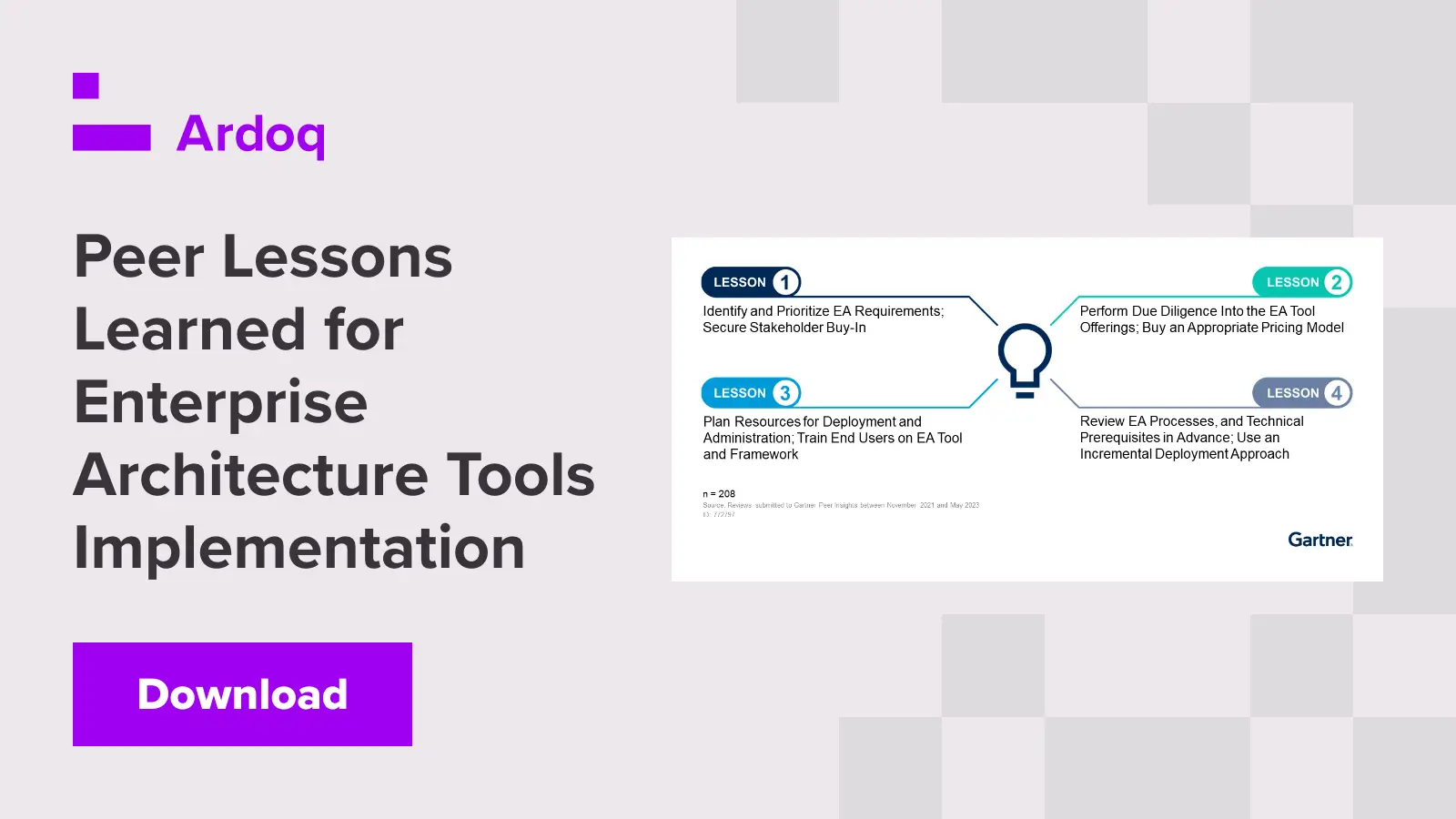Artificial Intelligence (AI) news is everywhere. On the surface, the media seems to be dividing the field into one of two categories: either people are tired of the hype and perhaps afraid of AI taking over jobs, or are true converts who believe AI is like magic. The reality, however, falls much closer to the middle of the spectrum: AI is a resourceful tool for most professions, including Enterprise Architects. Leveraging the technology to eliminate mundane tasks and speed up productivity can be a game-changer for the role they currently play in an organization.
Complex and fast-paced organizations need strategic enterprise planning capabilities that Enterprise Architecture (EA) offers, and EA needs to lean on AI to keep the speed these enterprises require. AI is a pivotal tool for architects who want to accelerate portions of their micro-level work and free up time for more comprehensive strategic thinking. EAs who succeed in their role focus on business strategy and bigger-picture thinking, and AI allows this thinking to flourish.
As an EA, imagine if you could hire an assistant to help with mundane, redundant tasks or even to double-check your work. It may sound like futuristic science fiction, but in reality, this is already something forward-leaning software is working on. In the short term, new EA platforms will incorporate these responsibilities as a standard for a more intuitive and smoother user experience. In the long term, better solutions will likely operate as a second set of eyes to quality check and support the work of EAs as they think strategically and broaden their role. As their role focuses more on strategic business outcomes, the more an enterprise can accelerate growth.
Regardless of the current landscape, Enterprise Architecture tools and practices have both lagged in adopting AI. Much of this is due to ongoing confusion over the core purpose of AI tools: are they primarily for documentation, analysis, or consulting?
AI is already incorporated into Enterprise Architecture, and we see two main areas where AI can accelerate in supporting architects through content generation. Content generation is a broad field, but process automation and predictive modeling, in particular, are tools to help make better-informed decisions.
Did you miss our online discussion about the future of AI in EA? You can watch the recording here:
Content Generation as a First Step to AI in Enterprise Architecture
Machine Learning (ML) is a type of artificial intelligence that has already captured the public imagination with recent innovations. ML-driven generative AI, like ChatGPT, DALL-E, Bard, and OpenAI, all display highly impressive interaction, problem-solving, and content-creation capabilities.
More generally, ML has become firmly embedded in enterprise operations in key areas like analytics and process automation. Let’s take a look at two of the biggest spaces in AI for EA at the moment: process automation and predictive modeling.
Increasing Your Competitive Edge With Process Automation
As an Enterprise Architect, data collection, ingestion, and management are often monotonous and tedious tasks. They are nevertheless critical to your work. Without the proper data, mistakes or incorrect assumptions will undeniably happen.
When AI is used to automate repetitive tasks and processes, it frees up time for EA professionals to focus on higher-value activities, which helps businesses become more competitive and innovative.
An example of this is inputting structured data. Creating a digital twin of an organization (DTO) insight requires structured data, but knowledge is mostly captured as unstructured content (i.e. diagrams and sketches). Converting content into structured data is resource intensive. However, machine-learning language models can automate the conversion.
Process automation also makes it easier for data and information to flow seamlessly between different systems. By doing this, EA teams can increase their efficiency, reduce errors, and improve the quality of their outputs.

Making Better Informed Decisions With Predictive Modeling
Predictive modeling is a powerful tool that helps organizations to make informed decisions based on data analysis. AI can create predictive models to help enterprise architects anticipate changes and identify areas of risk. Using statistical and machine learning techniques, EAs can build models that forecast future trends, behaviors, and outcomes. These models can, in turn, provide recommendations for optimized business processes. Predictive modeling can be applied to a wide range of business areas, such as customer segmentation, demand forecasting, fraud detection, and risk assessment.
By leveraging predictive modeling, organizations can gain insights into complex data sets, identify patterns, and make predictions that inform their strategic planning and decision-making processes. This approach can help organizations to optimize their operations, reduce costs, and improve their overall performance while being in control of employee costs. Predictive modeling can also anticipate what their technology should look like to meet future demand and operations.
Graphs rely on relationships, but the human linking of data can be unreliable. As an Enterprise Architect, your time is focused on understanding the implications of these relationships, but when there are hidden or missing components, you’re likely spending more time verifying the work than analyzing it.
AI could also be used to predict the impact of changes on an organization or to identify areas in an enterprise that are most vulnerable to security threats. Inference can be used to generate suggested links or hidden relationships between components. As part of a mapping activity, teams can identify change impact or spot holes in systems that hackers could find.
Transforming What Enterprise Architects Can Do With Artificial Intelligence for Strategic Enterprise Planning
Ardoq’s graph remains an excellent technical platform for building differentiating products. Our tool, therefore, fits well with this trend, and we will continue to push ourselves internally while challenging the industry. We identify ourselves as disruptors, and as such, we are exploring this space with great curiosity, wonderment, and ambition. There is a lot that is yet to be uncovered, but so far, we know that:
- AI will disrupt markets, processes, and supply chains, so you need a plan for it
- Effective execution of AI strategy depends on having your digital foundations in order
- Understanding and having control of your end-to-end processes and alignment of execution is essential
The potential of AI to transform and disrupt the EA tools market is considerable. AI is becoming an increasingly important tool for all roles in all industries, not least for enterprise architects. AI will boost EA’s efforts to drive business innovation and transformation. With AI as an ally, predictive modeling, and process automation will revolutionize EA and give your organization a competitive edge. Are you ready?
To get an in-depth understanding of how to implement your organization's EA tool of choice effectively, read our latest:
